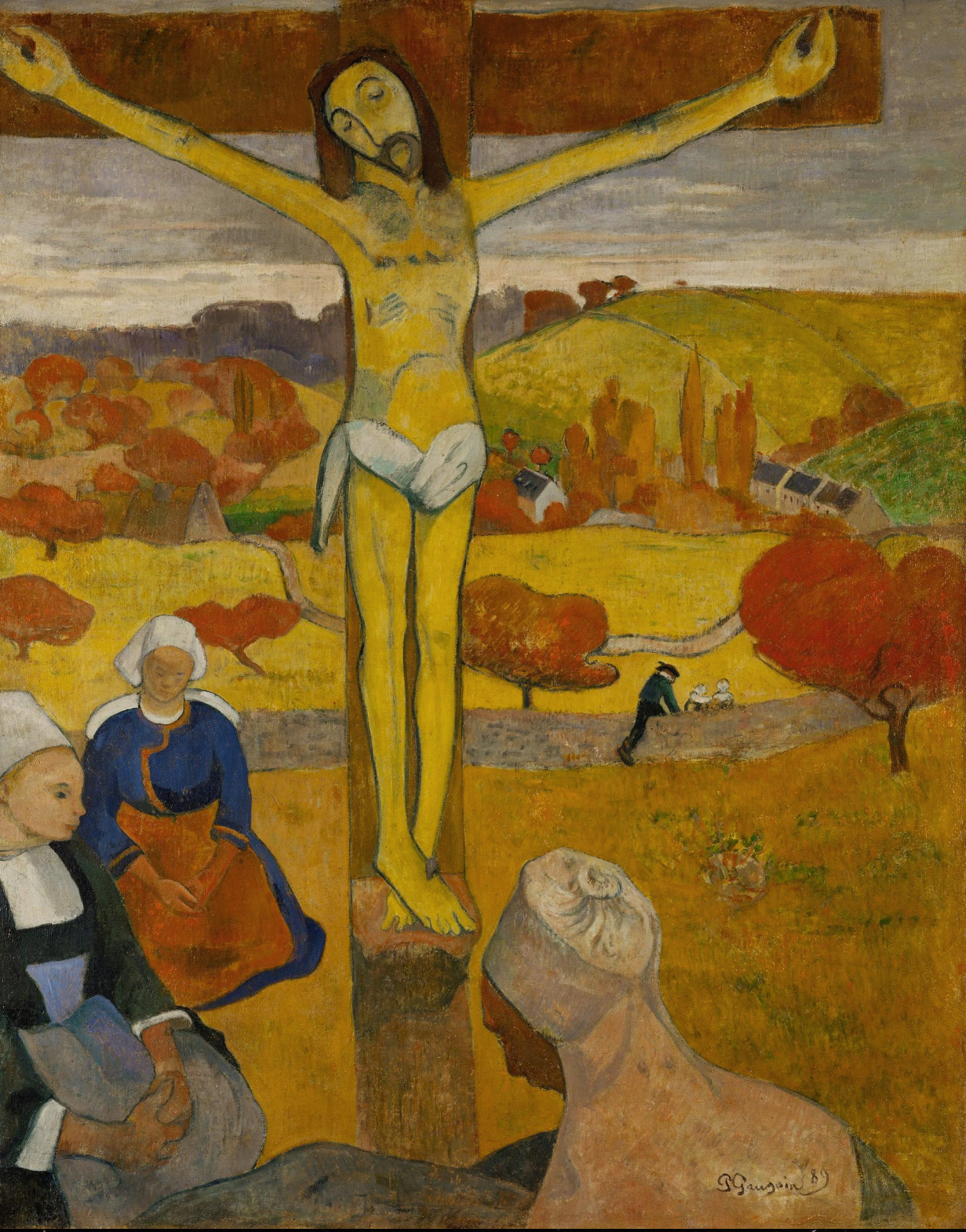Cloisonnism on:
[Wikipedia]
[Google]
[Amazon]
 Cloisonnism is a style of post-Impressionist painting with bold and flat forms separated by dark contours. The term was coined by critic Édouard Dujardin on the occasion of the
Cloisonnism is a style of post-Impressionist painting with bold and flat forms separated by dark contours. The term was coined by critic Édouard Dujardin on the occasion of the Review by William R. Everdell
of ''The First Moderns, Profiles in the Origin of Twentieth-Century Thought'' University of Chicago Press, 1997 retrieved March 27, 2010
File:Émile Bernard 1888 - Self-portrait with Gauguin portrait for Vincent.jpeg, Émile Bernard ''Self-portrait with portrait of Gauguin, dedicated to Vincent van Gogh.'' Bernard, 1888
File:Émile Bernard 1888-08 - Breton Women in the Meadow (Le Pardon de Pont-Aven).jpg, Émile Bernard, ''Breton Women in the Meadow'', August 1888.
File:Paul Gauguin 137.jpg,
at ArtFacts
{{Western art movements Post-Impressionism Artistic techniques Modern art
 Cloisonnism is a style of post-Impressionist painting with bold and flat forms separated by dark contours. The term was coined by critic Édouard Dujardin on the occasion of the
Cloisonnism is a style of post-Impressionist painting with bold and flat forms separated by dark contours. The term was coined by critic Édouard Dujardin on the occasion of the Salon des Indépendants
Salon may refer to:
Common meanings
* Beauty salon, a venue for cosmetic treatments
* French term for a drawing room
A drawing room is a room in a house where visitors may be entertained, and an alternative name for a living room. The name i ...
, in March 1888. Artists Émile Bernard, Louis Anquetin
Louis Émile Anquetin (26 January 1861 – 19 August 1932) was a French painting, painter.
Biography
Anquetin was born in Étrépagny, France, and educated at the Lycée Pierre Corneille (Rouen), Lycée Pierre Corneille in Rouen.
In 1882 he cam ...
, Paul Gauguin
Eugène Henri Paul Gauguin (; ; 7 June 1848 – 8 May 1903) was a French painter, sculptor, printmaker, ceramist, and writer, whose work has been primarily associated with the Post-Impressionist and Symbolist movements. He was also an influ ...
, Paul Sérusier, and others started painting in this style in the late 19th century. The name evokes the technique of ''cloisonné
Cloisonné () is an ancient technology, ancient technique for decorating metalwork objects with colored material held in place or separated by metal strips or wire, normally of gold. In recent centuries, vitreous enamel has been used, but inla ...
'', where wires (''cloisons'' or "compartments") are soldered to the body of the piece, filled with powdered glass, and then fired. Many of the same painters also described their works as Synthetism, a closely related movement.
In '' The Yellow Christ'' (1889), often cited as a quintessential cloisonnist work, Gauguin reduced the image to areas of single colors separated by heavy black outlines. In such works he paid little attention to classical perspective and eliminated subtle gradations of color—two of the most characteristic principles of post-Renaissance
The Renaissance ( , ) is a Periodization, period of history and a European cultural movement covering the 15th and 16th centuries. It marked the transition from the Middle Ages to modernity and was characterized by an effort to revive and sur ...
painting.
The cloisonnist separation of colors reflects an appreciation for discontinuity that is characteristic of Modernism
Modernism was an early 20th-century movement in literature, visual arts, and music that emphasized experimentation, abstraction, and Subjectivity and objectivity (philosophy), subjective experience. Philosophy, politics, architecture, and soc ...
.of ''The First Moderns, Profiles in the Origin of Twentieth-Century Thought'' University of Chicago Press, 1997 retrieved March 27, 2010
Gallery
Paul Gauguin
Eugène Henri Paul Gauguin (; ; 7 June 1848 – 8 May 1903) was a French painter, sculptor, printmaker, ceramist, and writer, whose work has been primarily associated with the Post-Impressionist and Symbolist movements. He was also an influ ...
, '' Vision after the Sermon,'' 1888.
Image:Louis Anquetin.jpg, Louis Anquetin
Louis Émile Anquetin (26 January 1861 – 19 August 1932) was a French painting, painter.
Biography
Anquetin was born in Étrépagny, France, and educated at the Lycée Pierre Corneille (Rouen), Lycée Pierre Corneille in Rouen.
In 1882 he cam ...
, ''Reading Woman,'' 1890
Image:Serusier - the talisman.JPG, Paul Sérusier, ''The Talisman/Le Talisman,'' 1888, Musée d'Orsay
The Musée d'Orsay ( , , ) () is a museum in Paris, France, on the Rive Gauche, Left Bank of the Seine. It is housed in the former Gare d'Orsay, a Beaux-Arts architecture, Beaux-Arts railway station built from 1898 to 1900. The museum holds mai ...
, Paris
Paris () is the Capital city, capital and List of communes in France with over 20,000 inhabitants, largest city of France. With an estimated population of 2,048,472 residents in January 2025 in an area of more than , Paris is the List of ci ...
Resources
Notes
See also
* Émile Bernard chronology * The Volpini Exhibition, 1889External links
at ArtFacts
{{Western art movements Post-Impressionism Artistic techniques Modern art